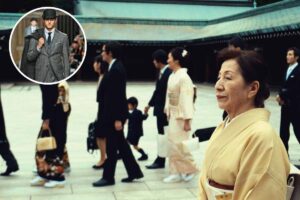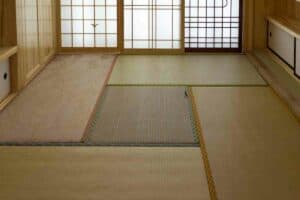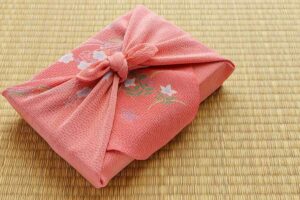Have you seen fabric signs hanging on the walls or above a door in Japan? You’re looking at noren.
Noren (ノーレン) is a traditional Japanese fabric banner that is often used as a door curtain or shop signage.
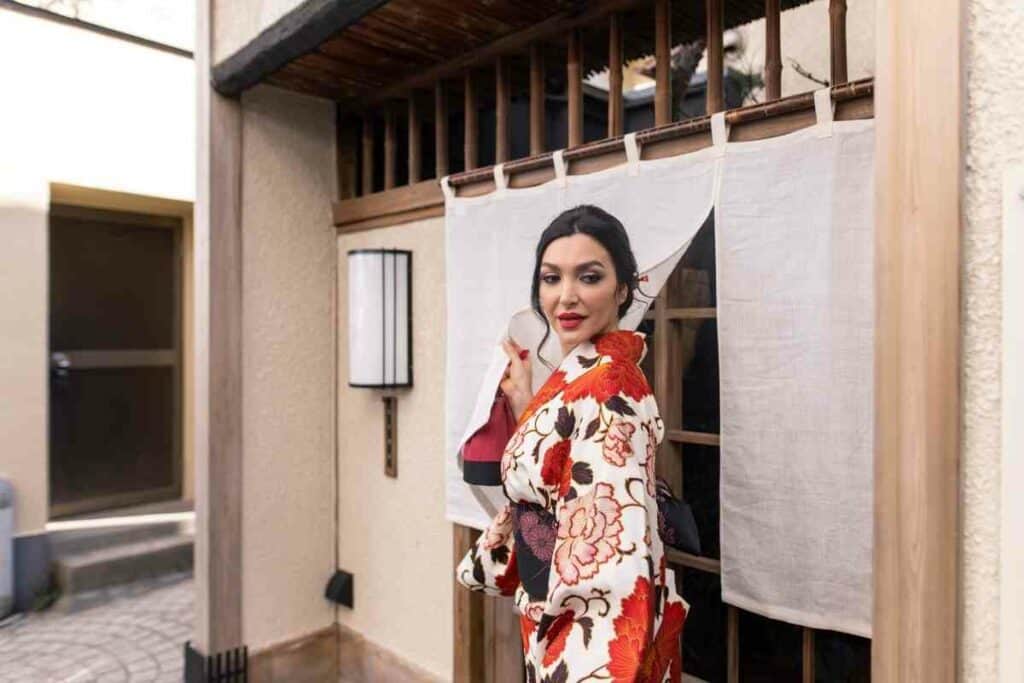
Although the design and usage of noren varies depending on the region, they are all typically made of cotton or silk fabric with a separation in the middle.
If you’re interested in learning how to hang one up at home, keep reading!
Table of Contents
What Is Noren
A noren is a traditional Japanese cloth panel typically hung between rooms to act as a divider and above doors to keep dust at a minimum.
The panels are traditionally a rectangular shape, with patterned or solid colored cloth on one side and white on the other.
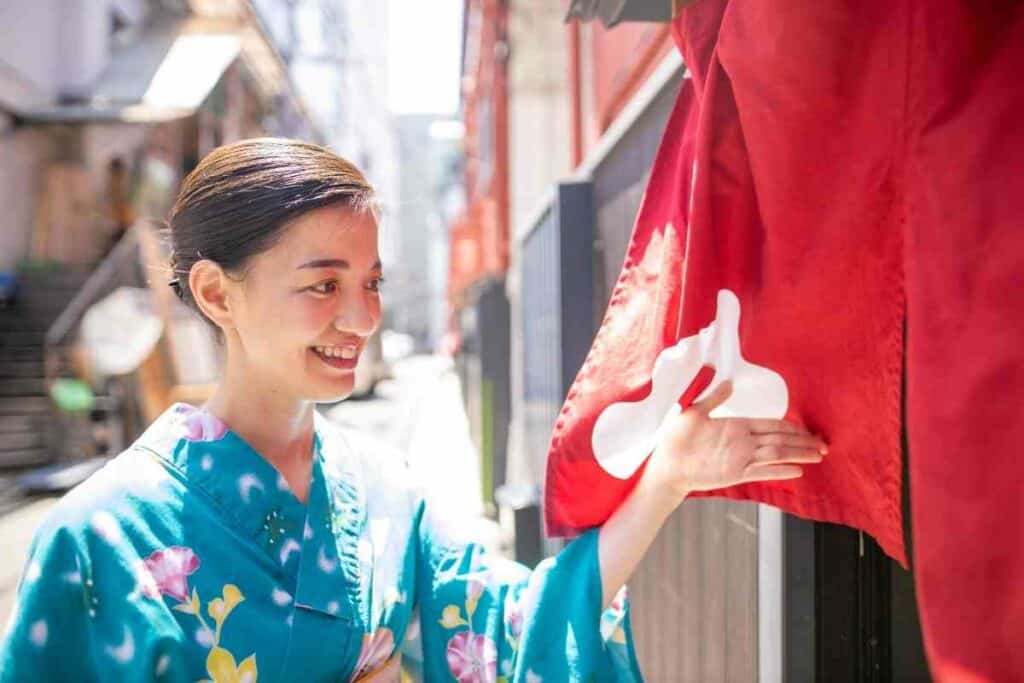
Noren are easily distinguished by their vertical cuts.
These cuts allow people to easily pass through them, to keep strong winds from tearing the fabric, but also to keep sunlight and dust out.
It’s believed that noren originated from the Heian Period from 794-1185.
They were hung above doors to allow airflow in the summer to help cool the house or to restrict airflow in the winter to retain heat.
Booking.comBy the time the Edo period started in 1603, restaurants had adopted the use of noren to keep out sunlight, dust, smoke, and bad smells.
It was used at sushi stands, where sushi was considered fast food.
Customers would stand by the stall to eat their sushi and then wipe their hands on the noren before they left.
The more people that ate at that stand, the dirtier the noren became, and kind of like a Yelp review, it let future customers know that this was a good place to eat.
Types of Noren
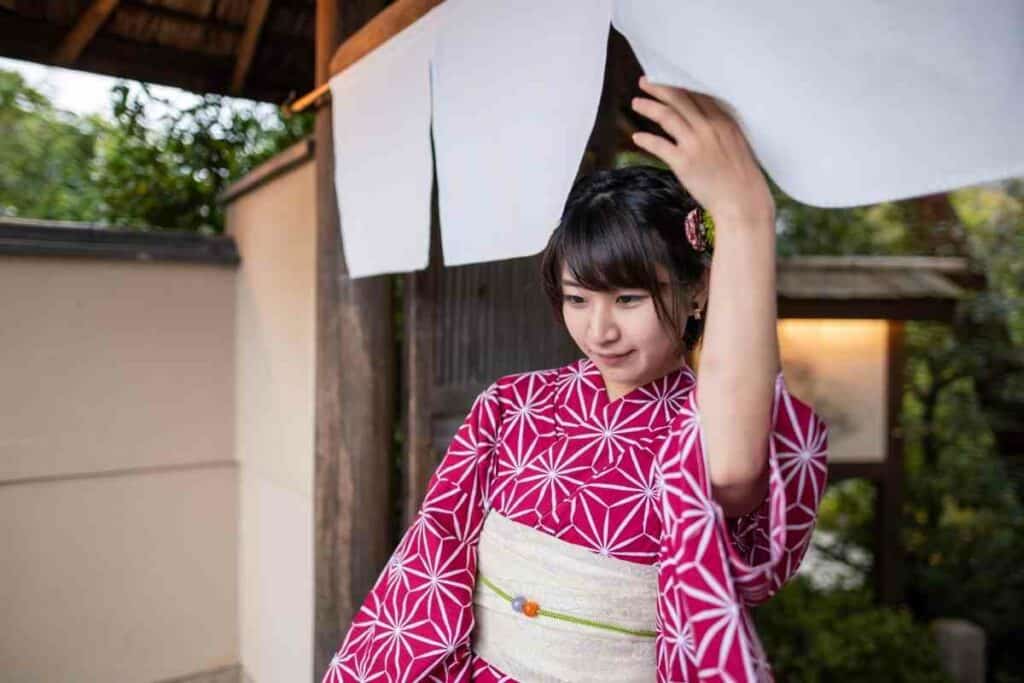
There are four different sizes of noren:
- Mizuhiki noren: These are the shortest noren. They are usually used as decoration in homes or shops. They are around 15-16 inches long
- Han noren: Han noren are the second shortest, measuring around 22-23 inches. These are usually hung above shop doors to keep the sun out, but still allow passers to see inside the store.
- Hiyoke noren: These noren are the second largest. These are usually around 3-5 feet in length, and they are typically hung in shops to advertise current promotions or other advertisements.
- Nara noren: These are the longest noren. The shortest ones are 63 inches but they can be even longer. They are used to hide large areas and to block the sun. This could be hiding an unsightly wall or a storage room, or just providing some shade while you relax outside.
Noren can also be found in bathhouses.
In these bathhouses, different colors are used to differentiate rooms for different genders instead of using signs like we do.
Blue noren are used for men and red or orange noren are used for women.
Does Color Matter?
Besides the different colored noren in bathhouses, it doesn’t matter very much today, but it used to.
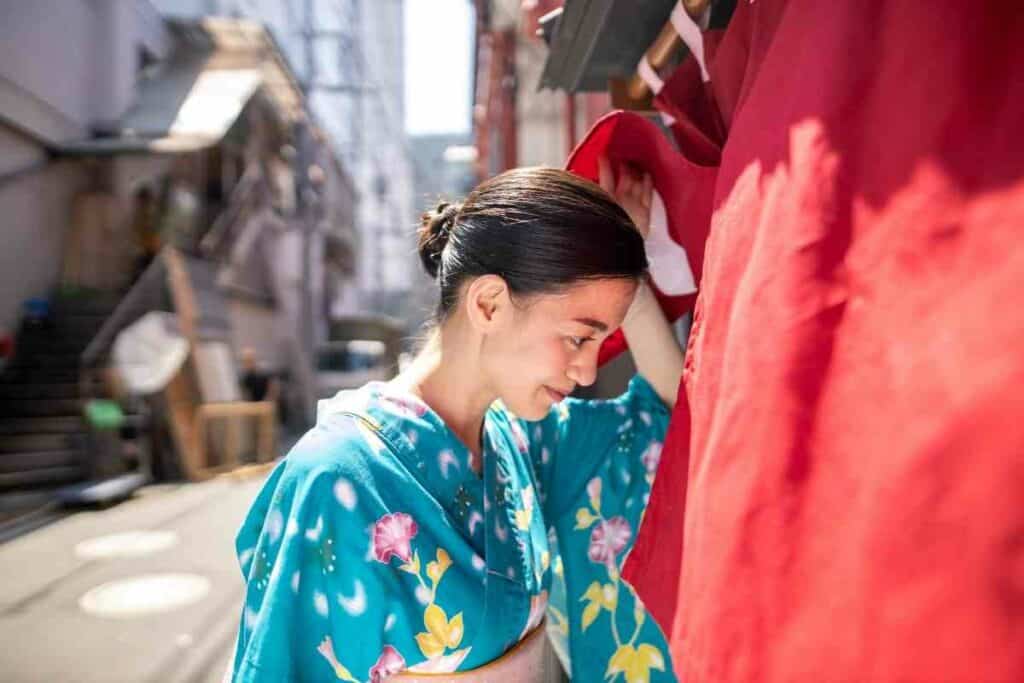
Different colors are used to indicate what type of shop a store was without needing to look inside:
- Indigo: This blue tone was used for restaurants and clothing stores. To get this rich indigo color persicaria tinctoria, or Japanese Indigo, was used. This plant is a natural insecticide that kept bugs out of food and kept them from eating the clothes.
- Red: Red appeared in Hanamachi, or “flower town”. This color represented a geisha neighborhood.
- White: White, or natural colored noren was used for grocery stores and candy shops. The color represents white sugar, something that all three types of stores had in common.
- Brown and Orange: These two colors were used interchangeably for tobacco shops, flower shops, and drug stores.
Even though newer shops in Japan don’t die their noren to match this color guide, it’s still interesting that western culture still often uses blue for fashion and white for pharmacies.
How to Hang Noren
Unlike most things in Japanese culture, there is no “proper” way to hang a noren, but there are a few different ways to hang it.
Noren Rod
The first way to hang a noren is by using a noren rod.
These are just like a bathroom curtain rod, except they have a fancier title.
Slide the loops of the noren onto the noren rod, and adjust the tension so the noren rod stays up in the space.
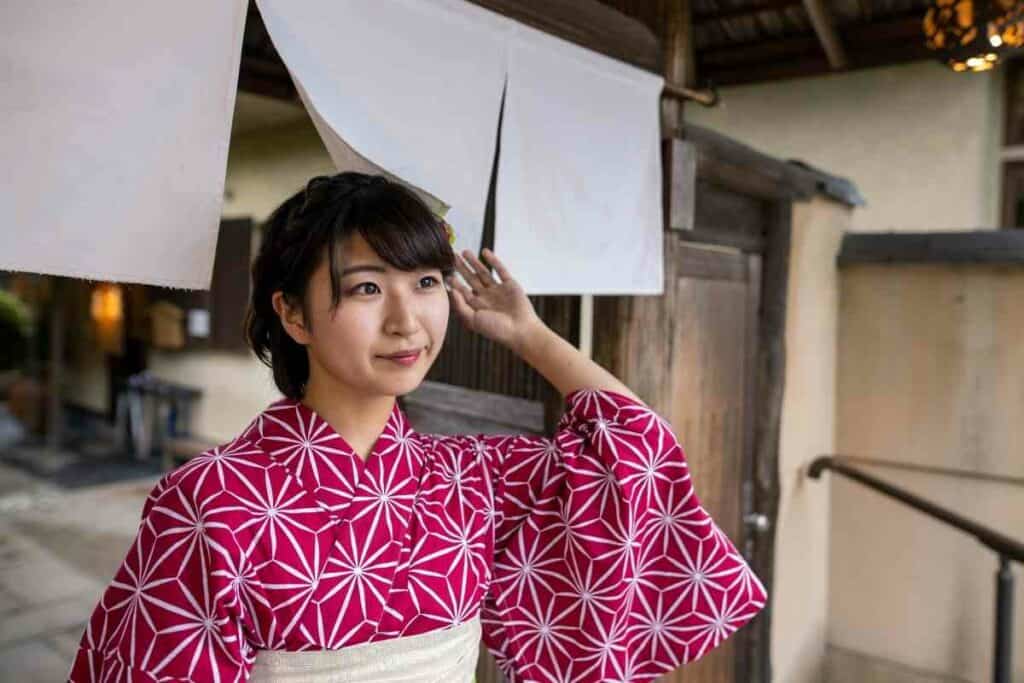
A Mounted Rod
Although similar to a noren rod, a mounted rod doesn’t use tension to hold the rod in place.
Instead, the rod rests on brackets that are mounted to a wall, usually with nails or screws.
This is very much like a curtain rod you’d find in your living room.
Rope
Rope can be used in two ways to hang a noren.
You can slide the loops of the noren directly onto the rope and tie the rope onto supports, or staple it to your wall.
You can also slide the loops of the noren onto a small dowel, and use a rope to hang the dowel up.
This method works best for small noren; either the mizuhiki noren or han noren.
Final Thoughts
Noren is a simple, yet classy way to advertise a business, hide anything you don’t want a passerby to see, and divide rooms without needing tools or an entire construction team.
Now that you know what noren is and how to hang it, you can use this lightweight, and easy-to-install method to add privacy to your home.
Read Also
- Best Japanese Knives Top Picks for Every Kitchen
- Japan’s Bold New Trend: Dressing Like a British Gentleman (or at Least Trying)
- 7 Best Japanese Sunscreen Products You Can Buy Online
- 5 Best Japanese Makeup Brushes for a Flawless Finish
- 7 Benefits Of Tatami Mats You Should Know
- The Best Furoshiki Wrapping Cloths: Inspiration, Ideas & Cloths You Can Buy


